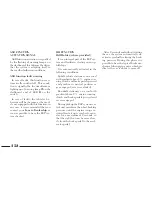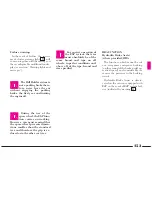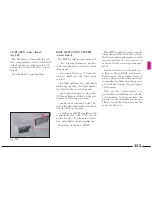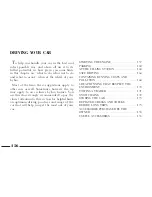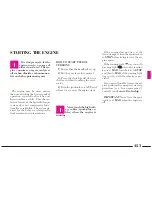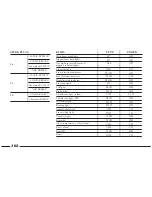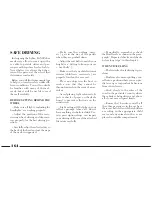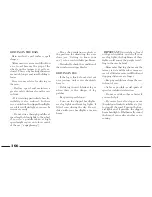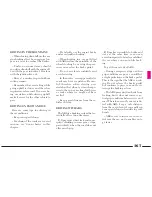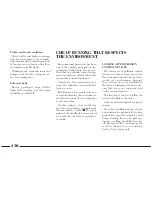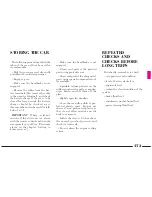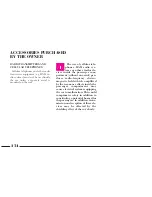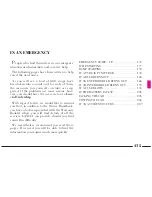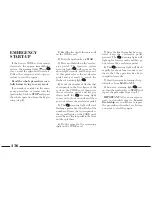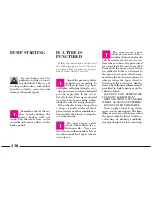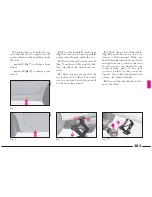
166
DRIVING IN THE RAIN
Rain and wet road surfaces spell
danger.
All manoeuvres are more difficult on
a wet road because the grip of the
wheels on the tarmac is greatly re-
duced. This is why braking distances
are much longer and road-holding is
lower.
Here is some advice for driving in
the rain:
– Reduce speed and maintain a
greater safety distance from the cars
in front.
– If it is raining particularly heavily,
visibility is also reduced. In these
cases, switch on the dipped headlights
even if it is still daylight so you can be
seen more easily.
– Do not drive through puddles at
speed and hold on tightly to the wheel
if you do: a puddle taken at high
speed might cause you to lose control
of the car (“aquaplaning”).
– Move the ventilation controls to
the position for demisting the win-
dows (see “Getting to know your
car”) so to avoid visibility problems.
– Periodically check the condition of
the windscreen wiper blades.
DRIVING IN FOG
– If the fog is thick, do not start out
on a journey unless you absolutely
have to.
– If driving in mist, blanket fog or
when there is the danger of fog
patches:
– Keep your speed down.
– Turn on the dipped headlights,
rear fog lights and front fog lights, if
fitted, even during the day. Do not
drive with your headlights at main
beam.
IMPORTANT
On stretches of road
with good visibility, switch off your
rear fog lights; the brightness of these
lights could annoy the people travel-
ling in the cars behind.
– Remember that fog also means the
tarmac is wet and therefore manoeu-
vres of all kinds are more difficult and
stopping distances are longer.
– Keep a good distance from the cars
in front of you.
– As far as possible, avoid spurts of
speed or sudden deceleration.
– Do not overtake other vehicles if
you can help it.
– If you are forced to stop your car
(breakdown, limited visibility etc.) try
to stop off the road. Turn on the haz-
ard lights and, if possible, the dipped
beam headlights. Rhythmically sound
the horn if you realise another car is
coming.
Summary of Contents for Lybra
Page 1: ......
Page 13: ......
Page 104: ...103 CLIMATE CONTROL SYSTEM P4T0812 fig 98 ...
Page 292: ...291 ...
Page 293: ......
Page 294: ... Always ask your mechanic for ...
Page 296: ...NOTES ...
Page 298: ......

